Finlandaise d’origine, Henni Alftan a choisi depuis de nombreuses années la France et, plus précisément, Paris comme terre d’élection pour vivre et travailler. Si ses oeuvres ont été majoritairement vues en France et en Finlande, ses peintures ont récemment traversé l’océan Atlantique pour un solo show à la galerie new-yorkaise, karma.
Anonymes, intérieurs silencieux et souvent inhabités, cadrages serrés sur un geste, un détail, voila ce qui caractériserait à première vue la peinture d’Henni Alftan. Si nous savons peu de choses de ces personnages et avons peu de repères face à ces lieux, il est évident que cette iconographie nous est quant à elle familière. Et, en effet, attentive et grande observatrice du monde visible, l’artiste finlandaise bannit tous détails superflus sur sa surface à peindre. Henni Alftan recherche avant tout dans la création de ses images la forme et l’aspect le plus concret et le plus juste qui atteindra l’inconscient collectif, ce dernier caractérisé par des images communément connues et reconnues. L’artiste aime mettre au défi le regard, la mémoire du spectateur et le rendre actif dans son observation. En témoigne une série de peintures qui provoque en nous un sentiment de «déjà-vu ».
Alors ouvrez grands vos yeux et ne manquez aucun détails (parfois subtils) dans ses oeuvres ! On vous partage cette semaine notre entretien avec l’artiste qui a bien voulu répondre à toutes nos interrogations sur son travail et sur la manière dont elle parvient à le réaliser!
Anonymes, intérieurs silencieux et souvent inhabités, cadrages serrés sur un geste, un détail, voila ce qui caractériserait à première vue la peinture d’Henni Alftan. Si nous savons peu de choses de ces personnages et avons peu de repères face à ces lieux, il est évident que cette iconographie nous est quant à elle familière. Et, en effet, attentive et grande observatrice du monde visible, l’artiste finlandaise bannit tous détails superflus sur sa surface à peindre. Henni Alftan recherche avant tout dans la création de ses images la forme et l’aspect le plus concret et le plus juste qui atteindra l’inconscient collectif, ce dernier caractérisé par des images communément connues et reconnues. L’artiste aime mettre au défi le regard, la mémoire du spectateur et le rendre actif dans son observation. En témoigne une série de peintures qui provoque en nous un sentiment de «déjà-vu ».
Alors ouvrez grands vos yeux et ne manquez aucun détails (parfois subtils) dans ses oeuvres ! On vous partage cette semaine notre entretien avec l’artiste qui a bien voulu répondre à toutes nos interrogations sur son travail et sur la manière dont elle parvient à le réaliser!
L'artiste Henni Alftan
Could you introduce yourself?
My name is Henni Alftan. I was born in Helsinki but moved to France at 18 and have been living here since then. I’m now 41 so I’ve lived in France longer than in my native Finland. I still haven’t applied for citizenship. I think I’m more comfortable being a resident alien.
After having completed my art studies I showed mostly in Finland and France, but in the last few years I’ve had solo shows in Vancouver and Milan. I just had my first solo show at Karma in New York. The show was reviewed in New York Times, The New Yorker and Art in America.
You make paintings, on a tight plan, on details. This framing almost reminds us abstraction. The spatio-temporal notion is practically absent. Which viewpoint would you like to share?
The framing is tight so that there would be nothing that is not necessary in the painting. I don’t use photography or any other specific model for my pictures. This allows me to start with just lines and shapes and stop when the resemblance is sufficient for recognizability. I also reframe my sketches to a maximum. To include only the necessary information and allow the painting to be a painting as much as a picture. I very much think of my paintings as tableau’s, as objects. The compositions are very tight, as if the (generally white) wall was the actual background. This is one of the reasons why my paintings always continue on the sides of the tableau. ( Other reasons being that it gives me another level to talk about surface )
Also, I like that often you can see that there is something you are not seeing. So that I would have the viewer looking instead of just seeing. Seeing being a passive behavior where as looking supposes intent.
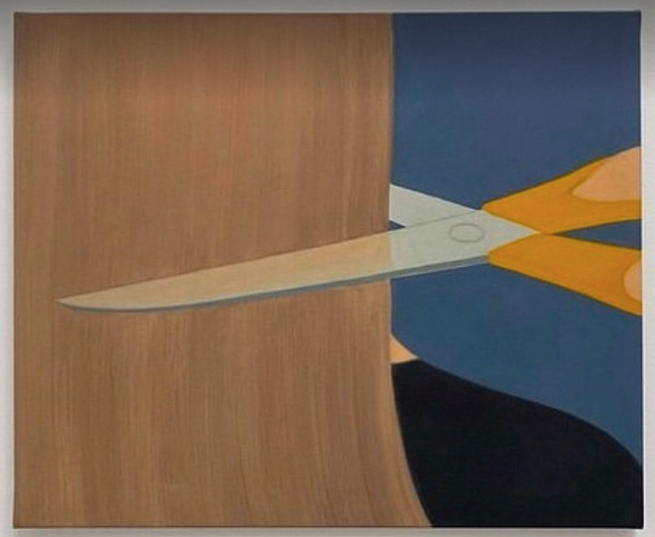
« Haircut » (Déjà-vu), 2020, 60 x 73 cm & 60 x 73 cm
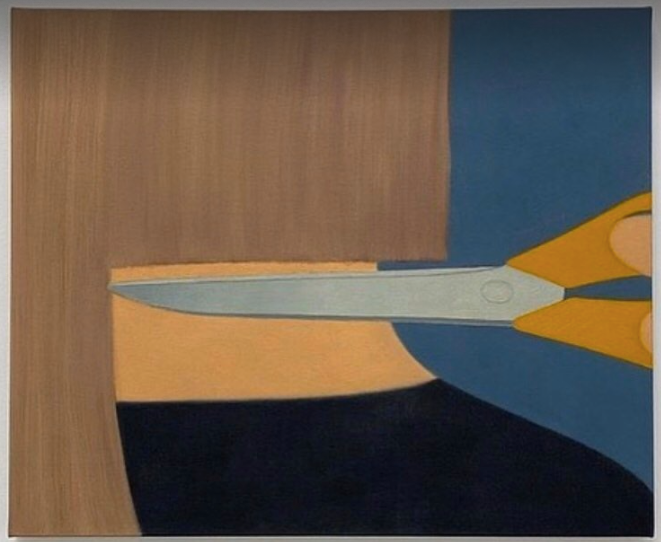
« Haircut » (Déjà-vu), 2020, 60 x 73 cm & 60 x 73 cm
There is also an almost iconic aspect in your painting, as if you wanted to highlight these details of everyday life. Is that it?
I think what you call the iconic aspect comes from the fact that a lot the pictures have this « I’ve already seen this » feel to them. I don’t think I really invent most of them. I don’t use any specific model, but they’re kind of already out there, floating in some collective unconscious. Witch often makes them instantly recognizable.
But above all theoretical aspirations I am trying to make a « good picture », a picture where all the parts fit so well that there are no questions about how it should or could have been different.
I look at a lot of great picture makers that had a huge effect on our way of seeing the world, like Hitchcock or Dürer.
When we are confronted with your works, a form of silence and appeasement emerges, surely due in part to its flat tones of color. Could you tell us more about it?
I think my pictures are about observing, looking intensely, scrutinizing even. So time kind of stands still. Things simply are.
I think my paintings represent the perception of the visible world, rather than the world itself.
I think my paintings represent the perception of the visible world, rather than the world itself.
Because I’m now showing a lot of my works in America I get compared to American artists like Alex Katz. I do admire Katz, but I feel closer to the works of someone like Morandi or Domenico Gnoli. You might not think Morandi and Gnoli have that much in common, but they’re both scrutinizing their subject on to an almost metaphysical level.
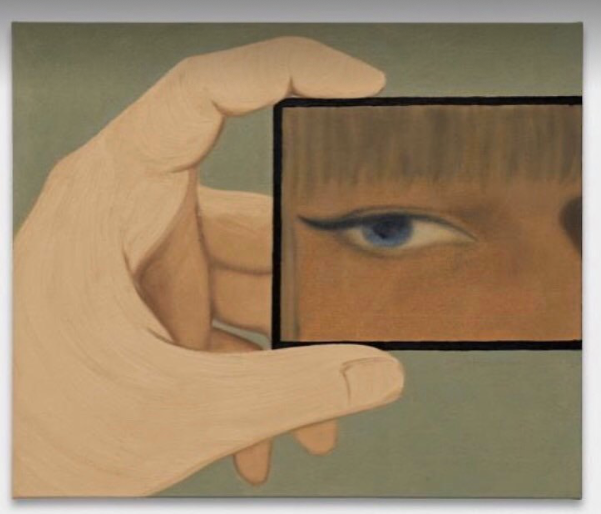
"Self-Portrait”, 2019, 54 x 65 m
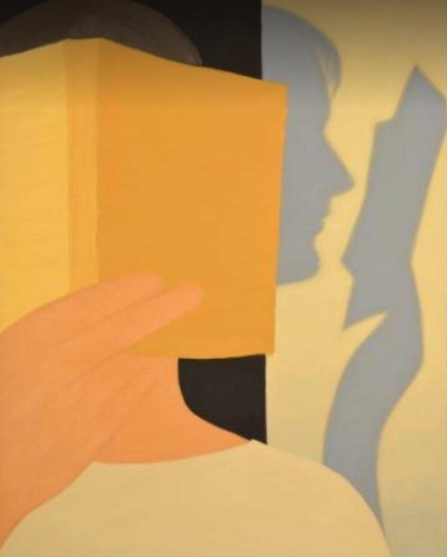
The Reader, 2016, 92x73cm
You seem to be attached to the depiction of the materials too, you paint its carefully and confront them with the body of your characters. Could you speak a bit about it?
Each painting is a singular project, and they all start with a worded proposition that I make to myself ; « I would like to paint such and such a thing in such and such a manner ». So the way the paint is applied on canvas is a defining aspect since the beginning. There’s often already a resemblance between the subject and paint as substance or the canvas itself, its weaving, its flatness. There’s generally more than one way of applying the paint in each painting, so as to show the intentionality of each way ; why do it like this rather than like that.
We notice that sometimes you paint a same scenes in different point of view or with the idea that a little time has passed between them. Could you speak a bit about this?
I think you’re referring to the two piece paintings, where the two parts are not hanging together. You wouldn’t see them at the same, in the same glance. Preferably they wouldn’t even be in the same room. I needed to call them something so I called them « Déjà-vu’s »,
as in the phenomena of the sensation of reliving a moment, but also just because in French it means literally « already seen ».
The idea of a double was already pretty present in the work, by way of reflection or because a lot of the paintings have a natural pair, a couple. But also the notion of image memory was already there. And I had been itching to do some sequential paintings, so the two part paintings just came along naturally. They’re a fairly new thing. I only started doing them less then two years ago.
The idea of a double was already pretty present in the work, by way of reflection or because a lot of the paintings have a natural pair, a couple. But also the notion of image memory was already there. And I had been itching to do some sequential paintings, so the two part paintings just came along naturally. They’re a fairly new thing. I only started doing them less then two years ago.
The purpose of not hanging them together was also to make the viewer more aware of the context in witch they were hung, the space between them and around them. I’ve always considered my paintings as much objects in space as pictures, picture planes. I’ve always wanted to look at them like any other contemporary art object, that is to ask myself « what is this thing, in this context, in this time ». But with time I realized that this is not how most people saw them. So I thought what if I could just shift their point of view a little ?
I don’t know exactly what the Déjà-vus are but it felt important to shake up the unwritten rules on how you hang a painting, in a pretty subtle way. Trying to shift the point of view without modifying the object. They’re still oil paintings on canvas. Nothing special about them.
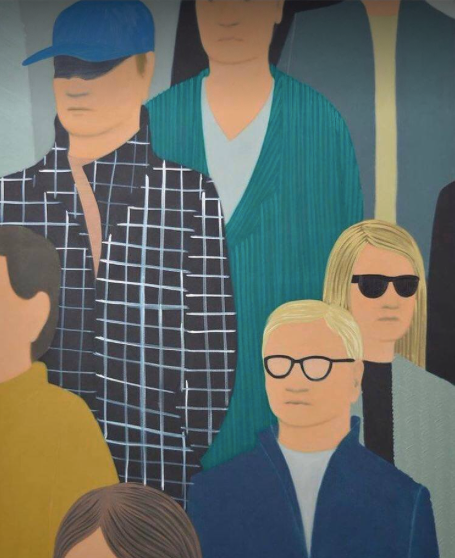
“Downtown” 2018, 146x114 cm & 146x114 cm
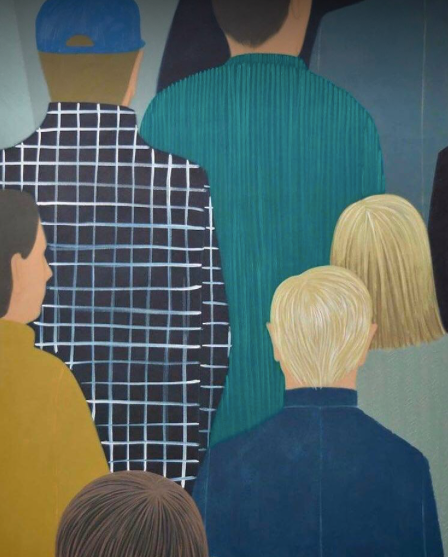
“Downtown” 2018, 146x114 cm & 146x114 cm
Could you tell us about the creative process? How do you arrive at this work of detail, on a precise element, on a moment of our daily life?
My paintings always depict the visible world. They’re not surreal or fantastic ; nobody has two heads. They’re by no means realistic in their style, but they always depict a plausible vision of the world. But it’s more interesting for me to observe, understand and deduce, rather than copy nature in the tradition sense. They’re a composition of small observations of the everyday, things I would observe in daily encounters, and those from already existing
depictions of the world, in mostly painting and cinema but of course also TV and photography etc. Then they get entwined with reflections on painting, looking and image making. And here when I say painting I obliviously mean the medium as well as it’s history.
But sometimes this is just instinctive. Some pictures just haunt you, and I don’t understand why until I’ve actually made them.
What are your inspirations?
I look at a lot of paintings, from all periods. And the advantage of this medium is that you can learn something useful from a sixteenth century painting, take this to your work and make something contemporary with it. The material reality of painting hasn’t changed that enormously, except for the invention of the metallic tube that means you don’t have to grind your own paints.
It’s difficult, when one decides to paint, in this day in age, in this century, not to drag along the weight of its history. But I think this is also what makes it very interesting.
Do you have future projects to share with us?
We’re currently doing a duo show with Dike Blair at Various Small Fires Seoul location. It’s a collaboration between Karma and VSF. Karma will also publish a catalogue of the show, with texts by Linda Norden.
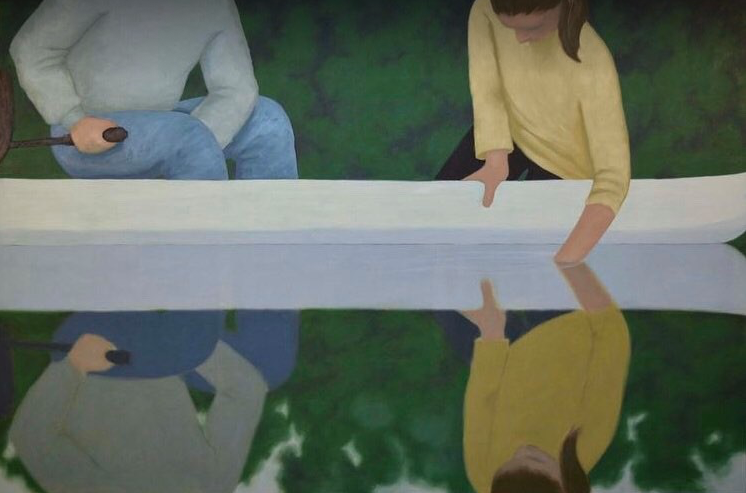
The Lake, 130x195 cm, 2017, oil on canvas
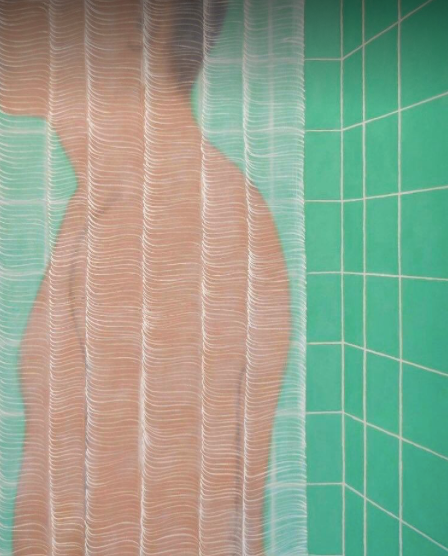
Shower, 2019, 130x97 cm
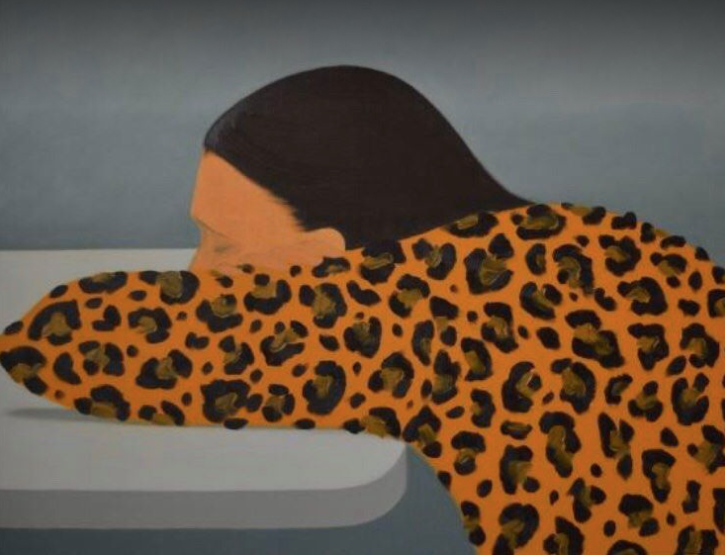
Sleep, 2016, 89x116 cm
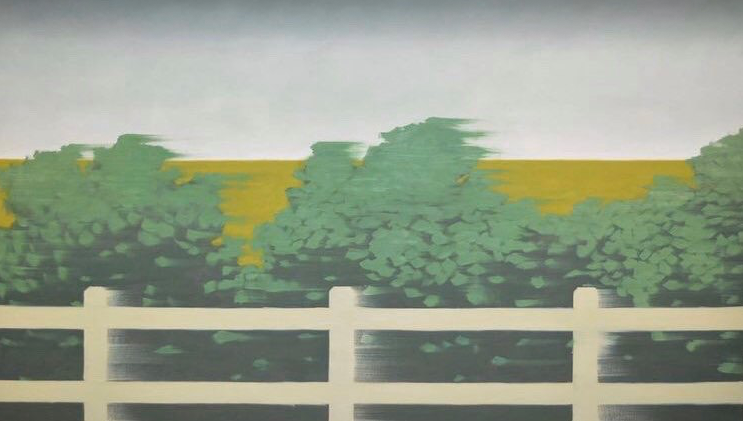
Fast Landscape, 2017, 114x195 cm
Retrouvez toutes les oeuvres et toute l'actualité de l'artiste par ici: